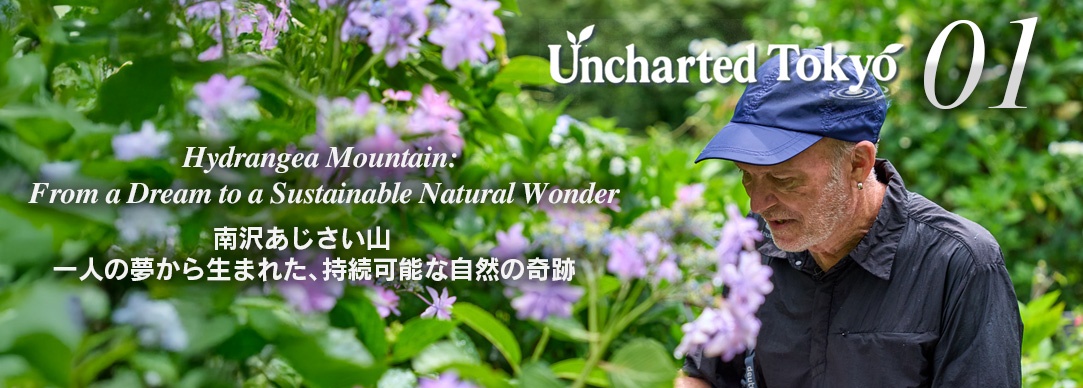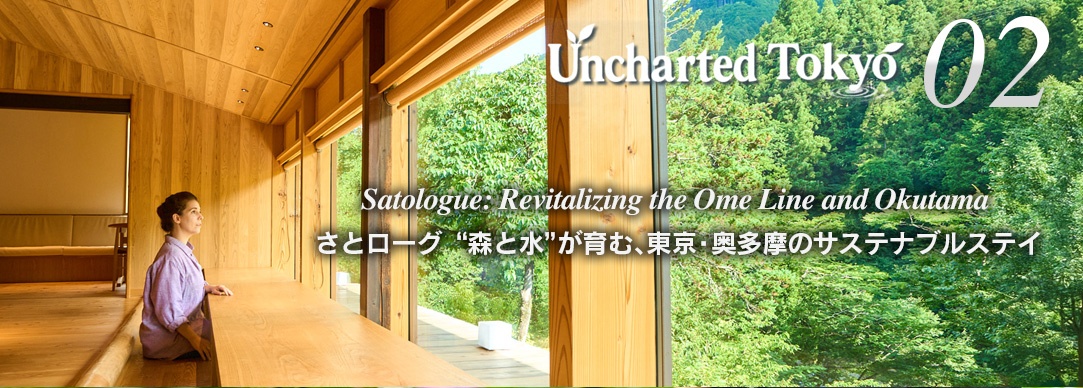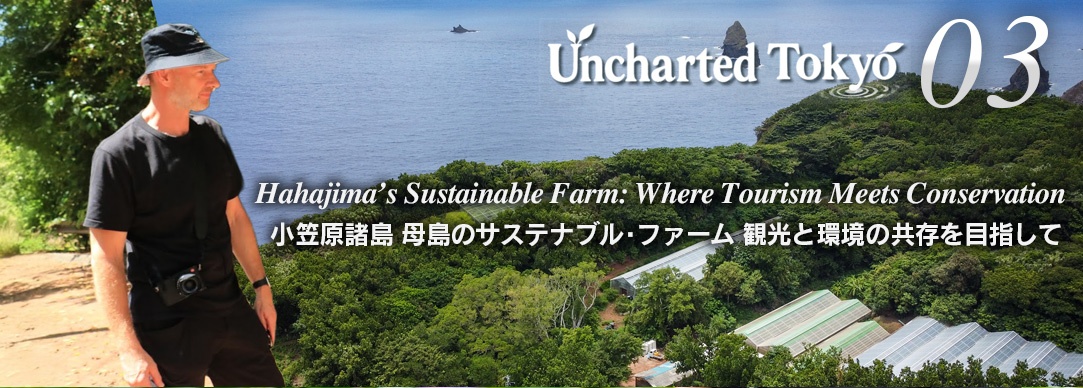Uncharted Tokyo 1|Hydrangea Mountain: From a Dream to a Sustainable Natural Wonder
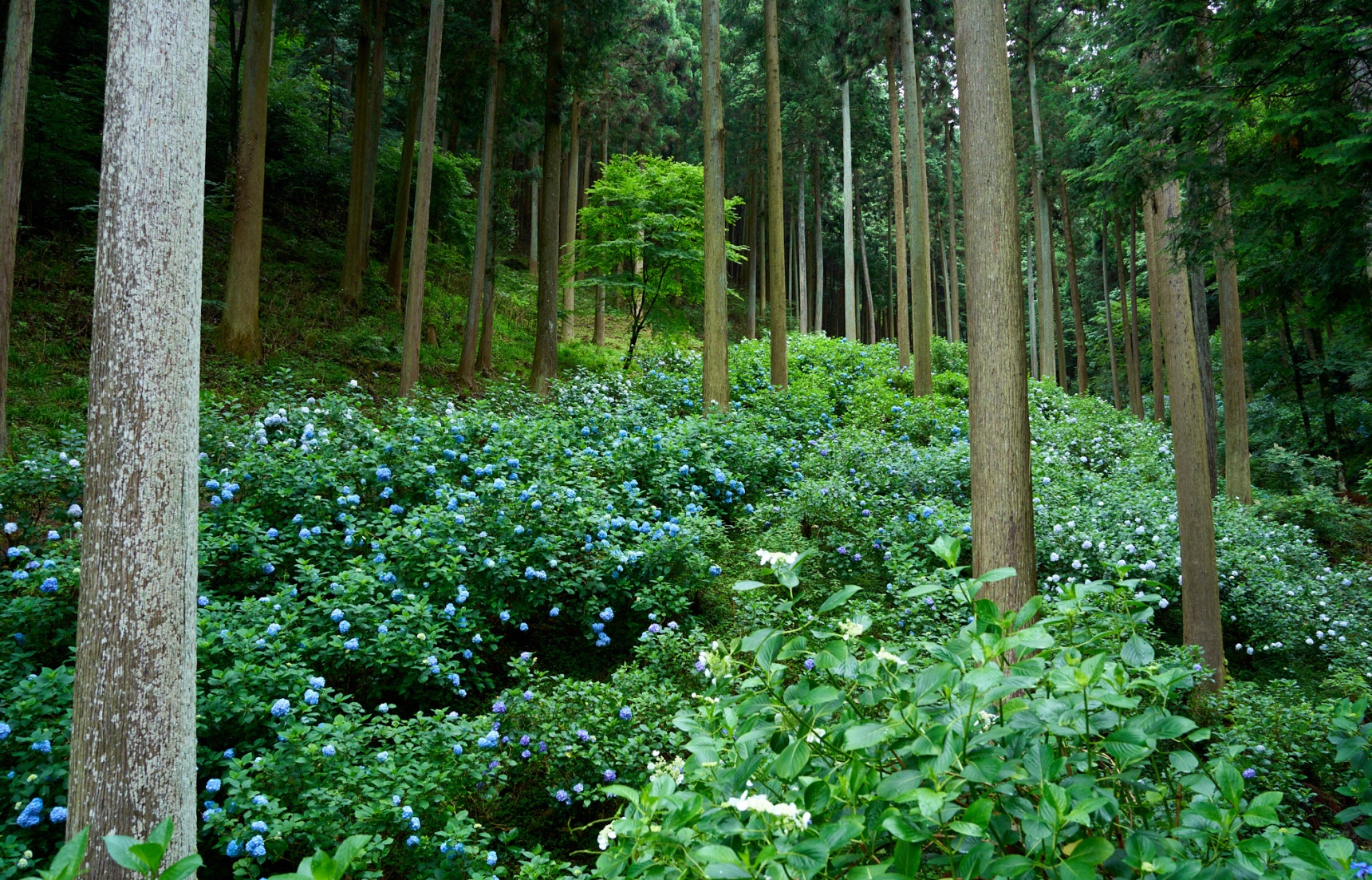
When people think of Tokyo, they often picture neon-lit streets and busy crowds. But just beyond the city lies another side of Tokyo—one of islands, forests, and quiet mountain villages. In these lesser-known areas, you’ll find experiences that go beyond sightseeing: nature, culture, and community. Responsible travel here means slowing down, exploring with care, and discovering something new. Uncharted Tokyo—step into the unknown.
By AAJ Editorial TeamA Magical Forest on the Edge of Tokyo
Just a 90-minute train ride from the towering skyscrapers of Shinjuku lies the Fukasawa area, nestled in a lush, peaceful forest on the slopes of the Okutama mountain range. One of metropolitan Tokyo’s westernmost areas, Fukasawa has embraced a variety of initiatives aimed at promoting sustainable tourism—welcoming growing number of visitors while preserving the fragile natural environment.

The Fukasawa area: A Community Committed to Sustainability
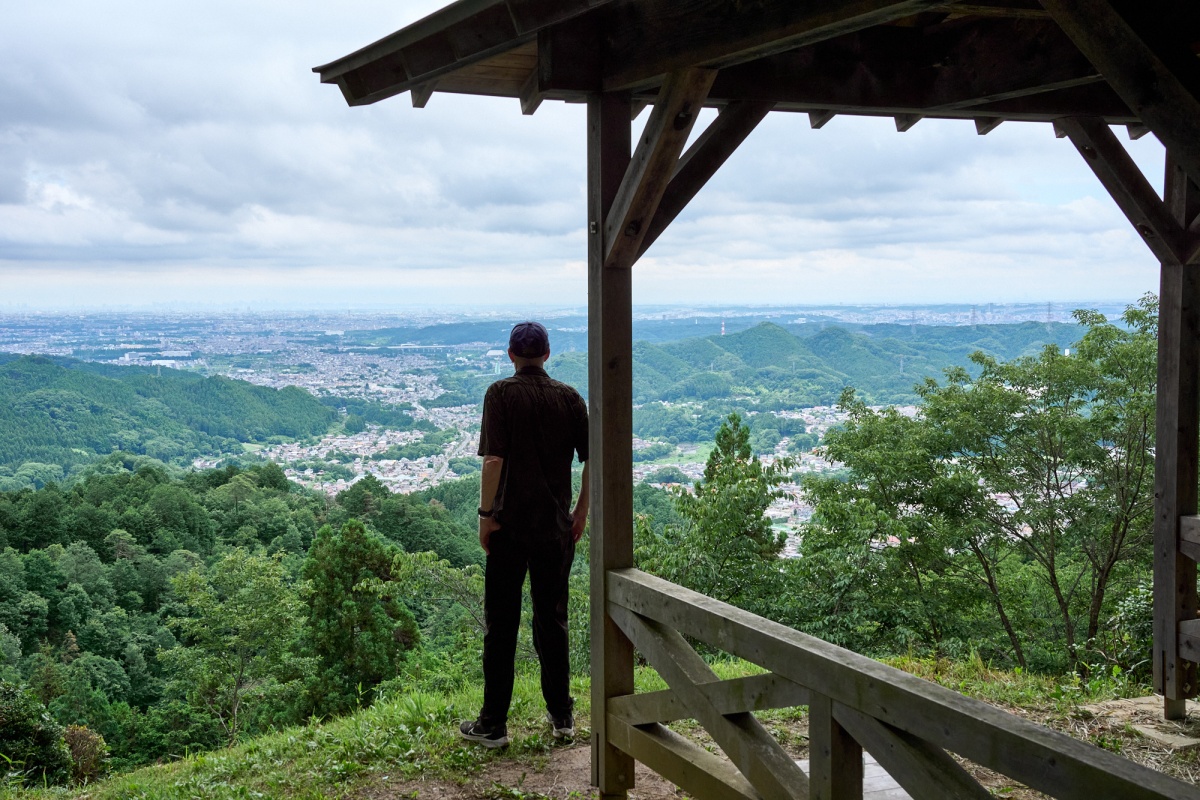
Ajisai Mountain is located in Akiruno City, an area blessed with magnificent natural scenery.
In a rare move for a rural area, for example, the community introduced a seasonal ban on private vehicles on one road during the hydrangea blooming period of June and July in an effort to reduce CO2 emissions and protect both the mountain landscape and local roads from overuse. Like Zion National Park in the U.S., or Japan’s Kamikochi Velley in the Central Alps, the area manages the ban by operating shuttle buses that bring eager hikers and other nature lovers to its central valley.
This climate-conscious policy reflects the local residents’ deep commitment to sustainable development. Area business have joined in these efforts, offering eco-friendly accommodations—cabins built from locally sourced timber, and low-impact campsites—and activities such as tree-planting and forest maintenance.
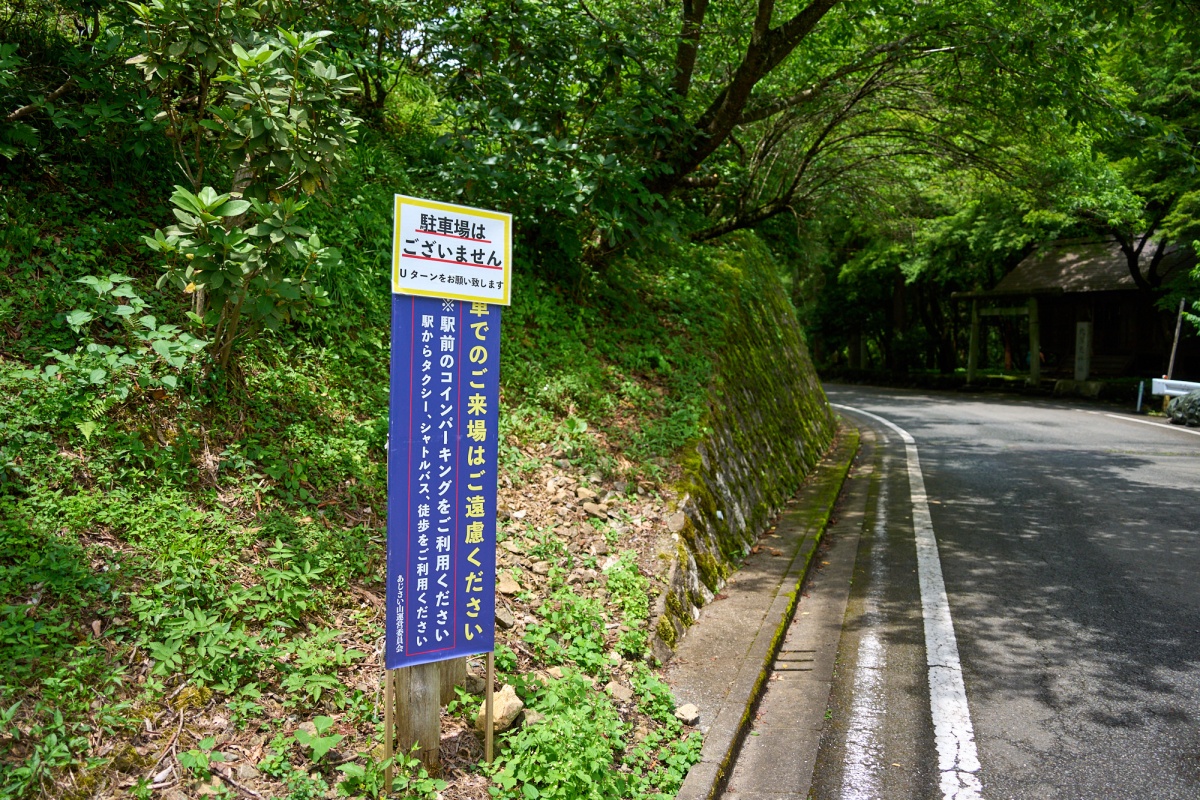
Drivers are met with signs announcing the private vehicle restriction along the route to the site.
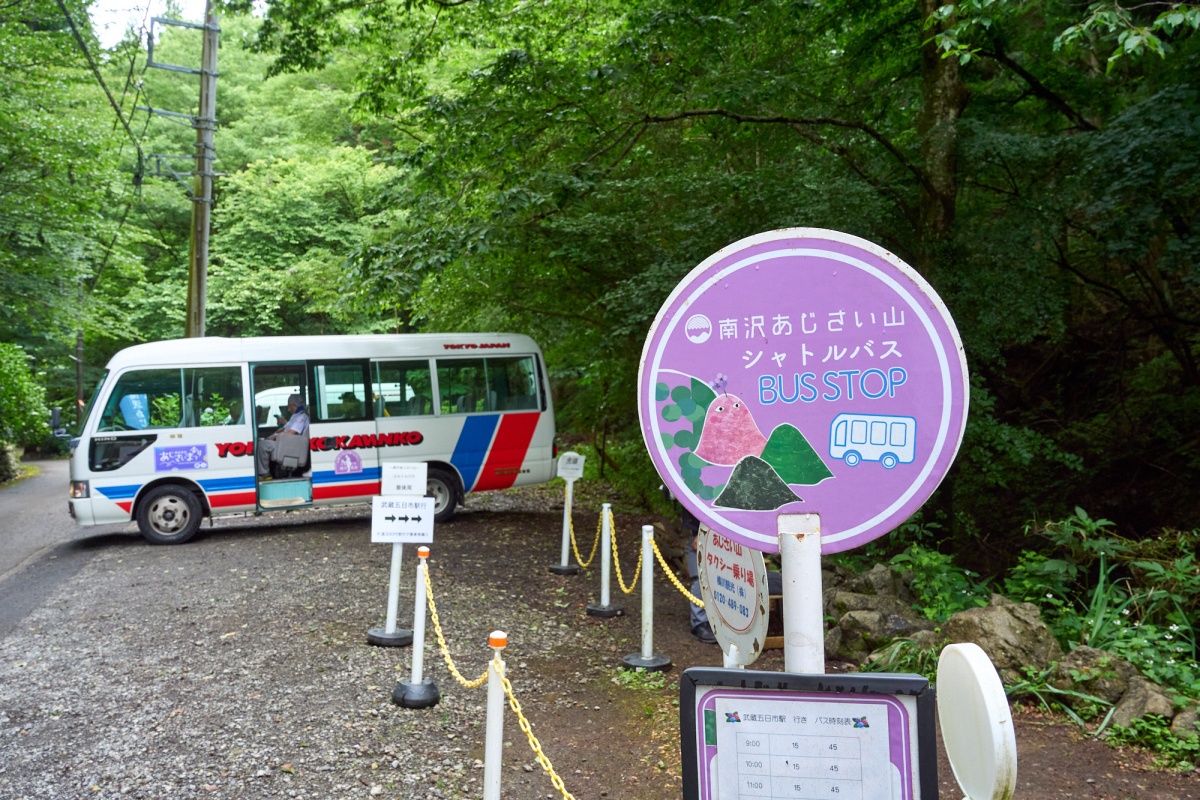
Visitors have the choice of shuttle bus service or walking from the station.
At the heart of Fukasawa’s natural offerings is Minamisawa Hydrangea Mountain (Ajisaiyama), a 45-minute walk from Musashi Itsukaichi Station on the JR Itsukaichi Line, or a quick 10-minute shuttle bus ride during peak season. Early summer sees visitors flock to the forested slope to witness the spectacular bloom of thousands of hydrangea plants.
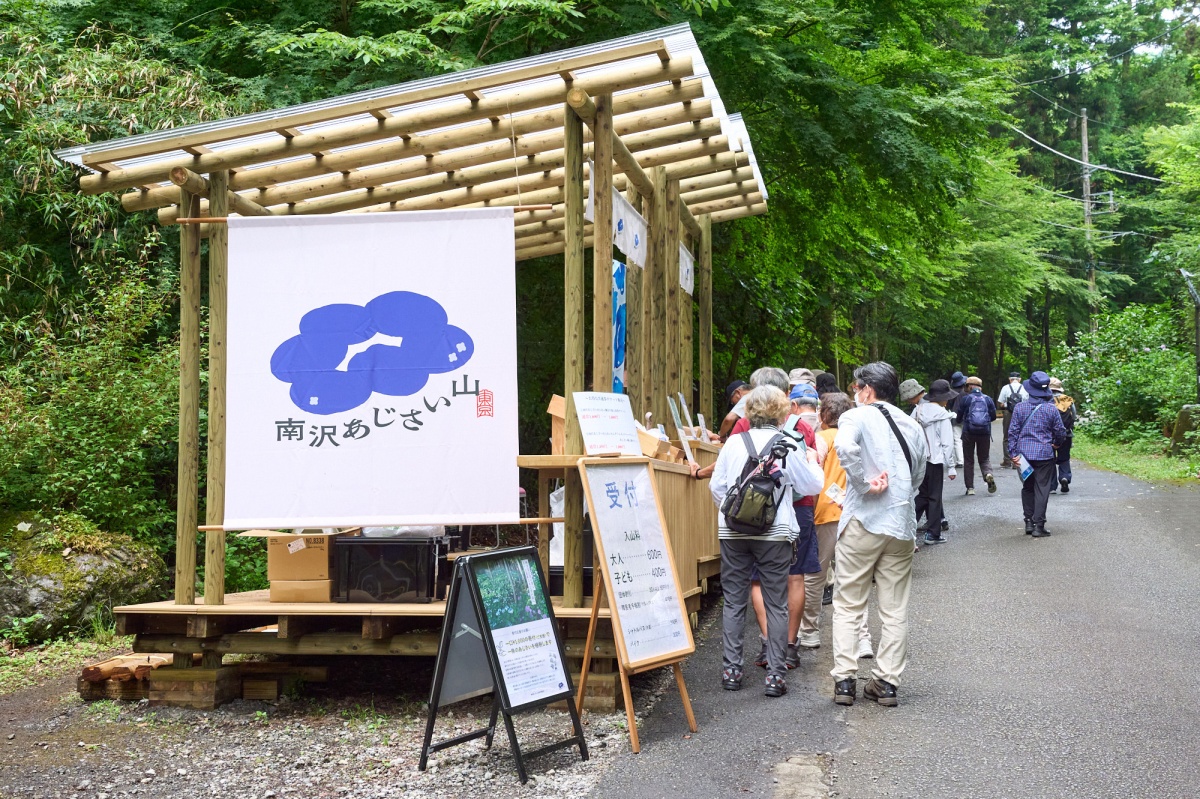
Visitors lining up at the reception desk at the park’s opening.
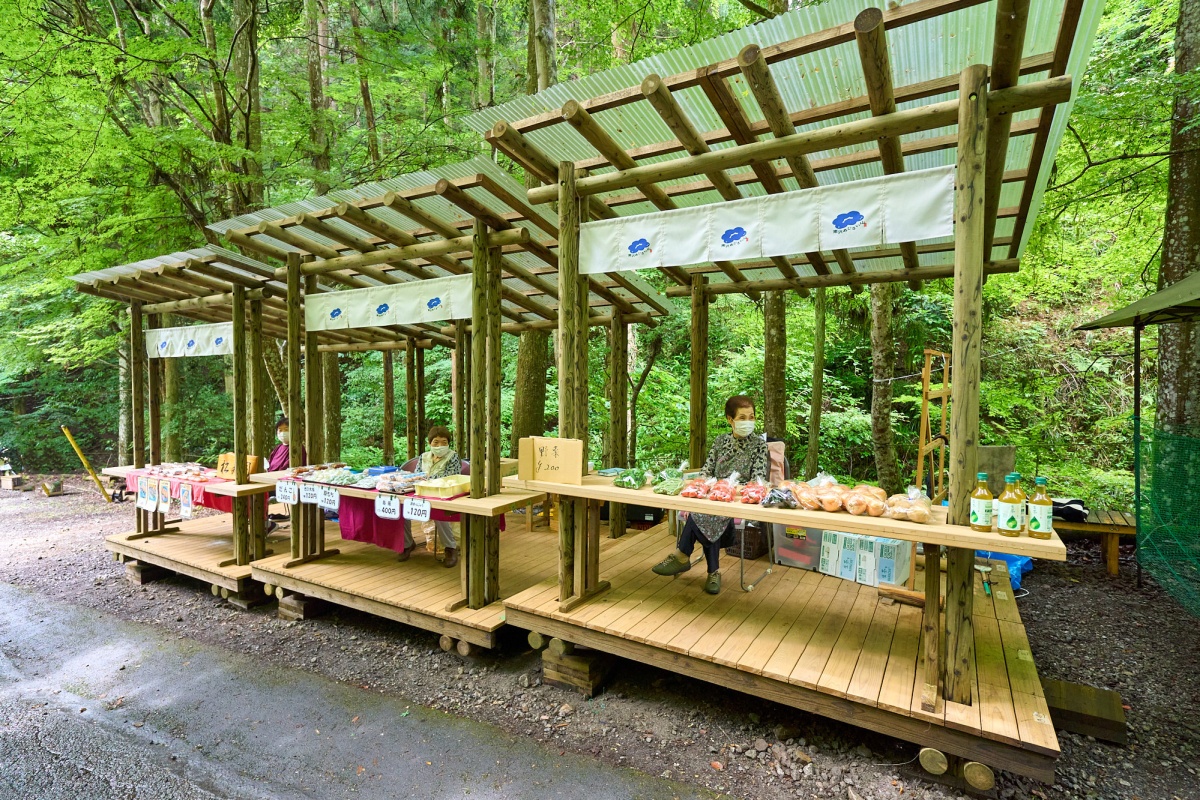
Along the path to the entrance, small stalls line up where locals sell regional products.
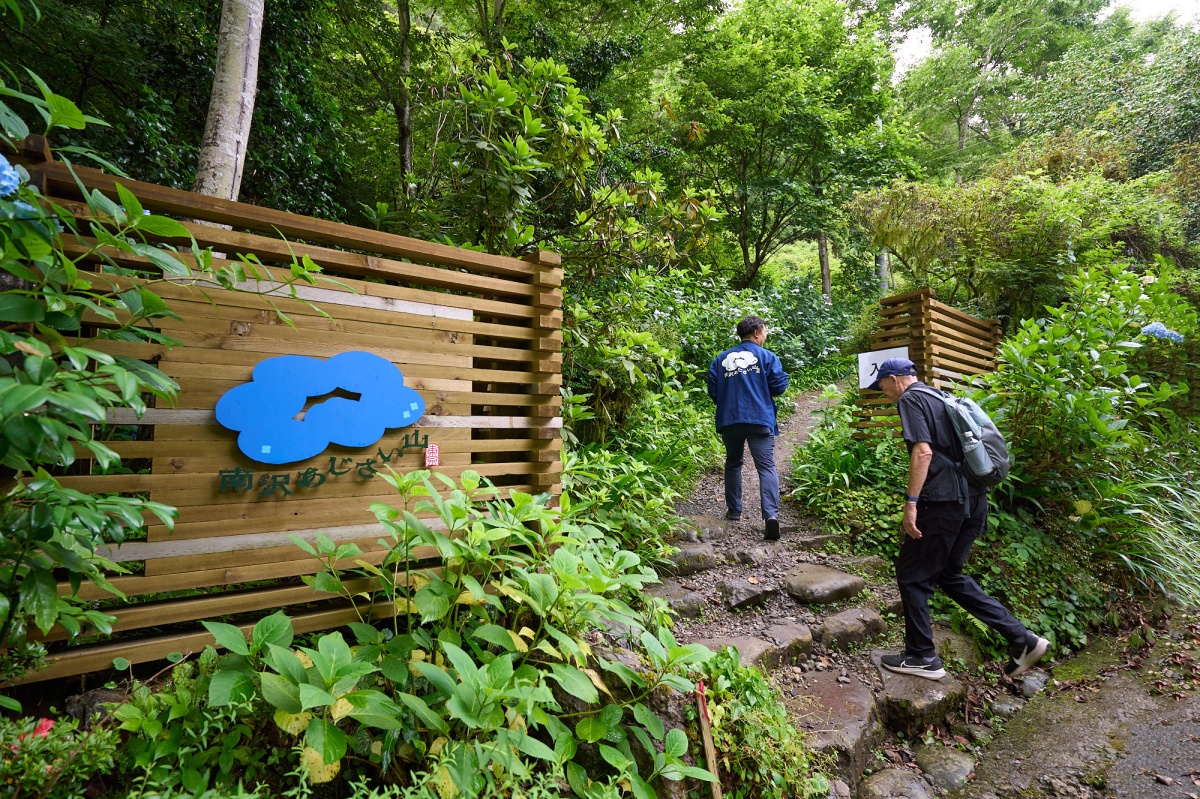
The newly renovated entrance is made of local wood, setting the tone for the park’s sustainable construction methods.

The Story of How a Single Hydrangea Came to Color an Entire Mountain
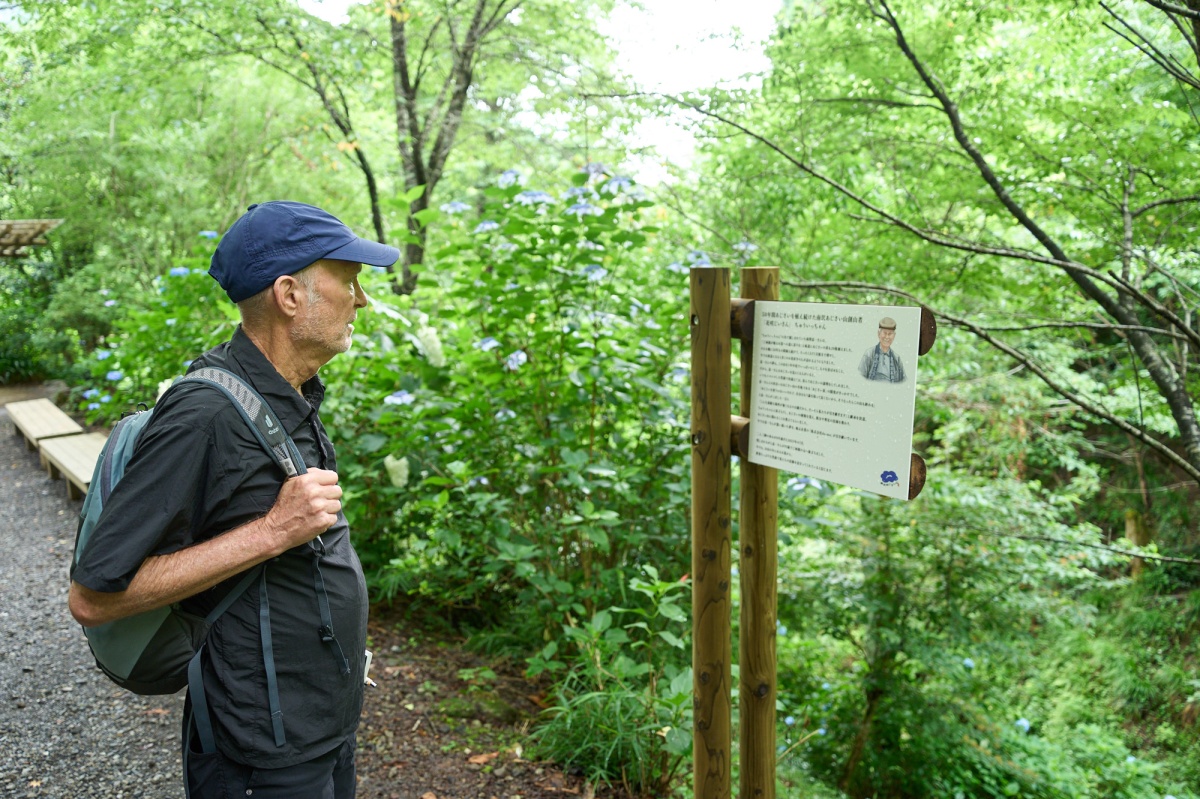
A sign on the path relates the story of Chuichi Minamisawa, the man who created Minamisawa Hydrangea Mountain.
Hydrangeas—ajisai in Japanese—are a cherished symbol of Japan’s rainy season, when their pastel colors brighten temple grounds and private gardens around the country. But the rare sight of so many hydrangeas blooming deep in a forest wilderness area is the result of a remarkable, decades-long labor of love by one man: Chuichi Minamisawa.
A 17th generation steward of the mountain, Minamisawa passed away in 2023 at the age of 93. His ancestor’s graves lie along a narrow trail that winds through a towering cedar forest and, in his forties, Minamisawa began planting a few hydrangea seedlings along the trail to beautify his visits to the family plot. Encouraged by the admiration of visitors, he taught himself how to cultivate, grow and maintain the flowers, expanding the plantings year by year. He even climbed and pruned the tall cedars in the forest to let more sunlight reach the flowering shrubs below.
His devotion transformed the landscape. The fields of hydrangeas eventually extended all the way up to the graves and beyond, and an increasing number of visitors, having heard of this unusual spot, made the mountainside a popular destination.
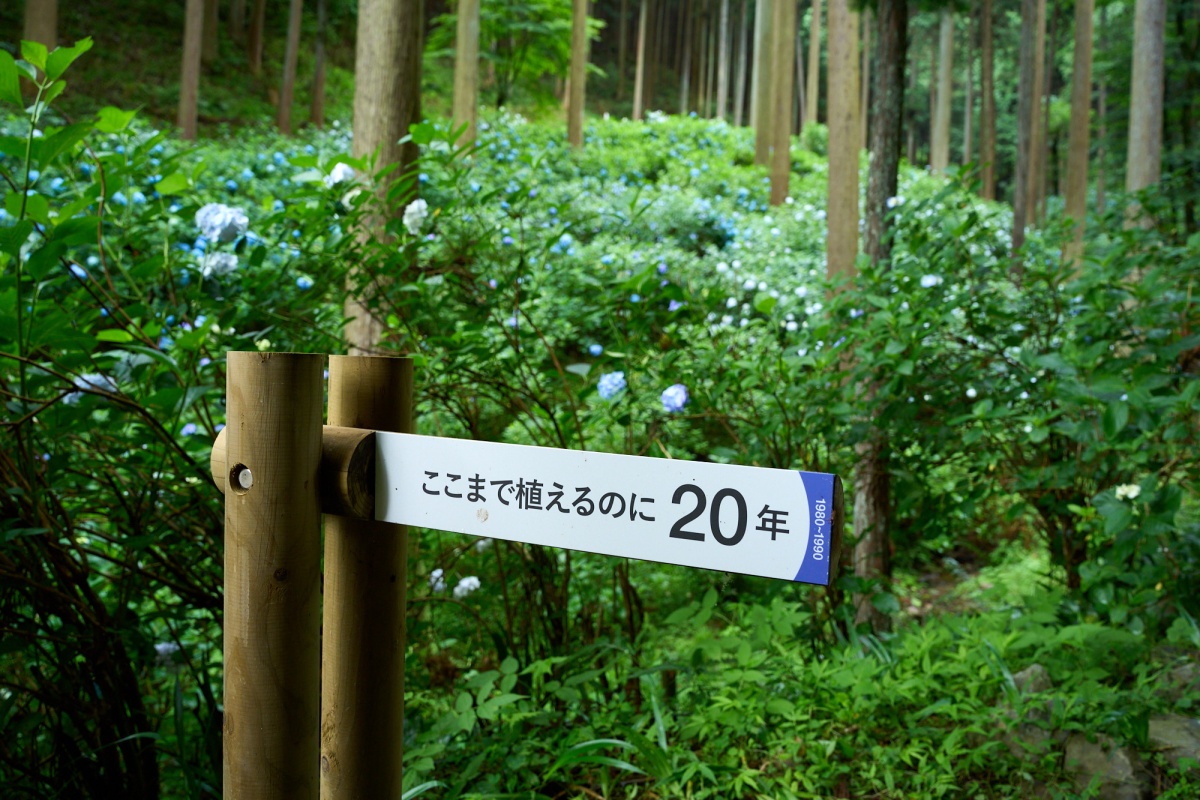
Signs along the trail indicate how many years it took to plant each section of the mountain.
Today, signs along the path mark the extent of each decade of his project, and the total number of hydrangea plants exceeds 15,000. It is an amazing sight at the peak of the season: the mountainside is blanketed in swaths of pink, blue, and white blossoms. Closer inspection reveals an astonishing variety of shapes and hues: the dense white clusters of kashiwaba hang like grapes on a vine, for example, while the “Dance Party” variety bursts outwards like a fireworks display.
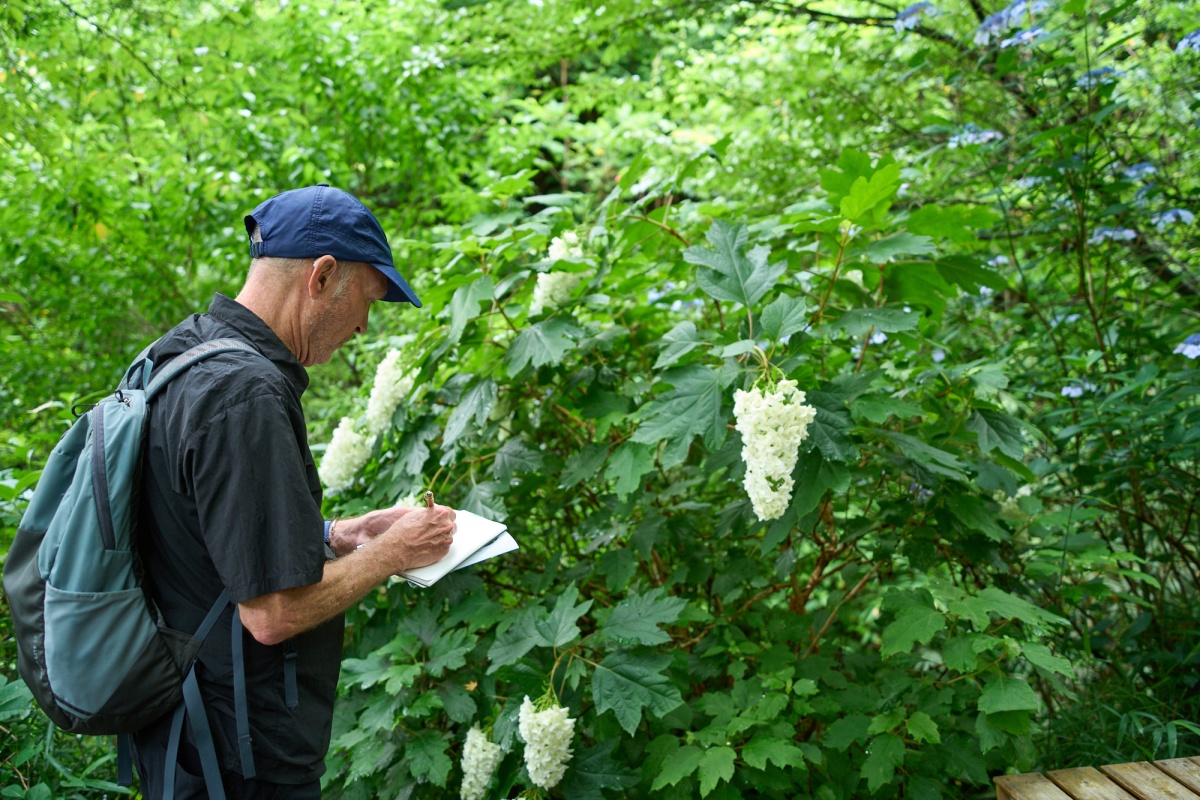
The blossoms of the kashiwaba variety of hydrangeas hang like grapes on a vine.
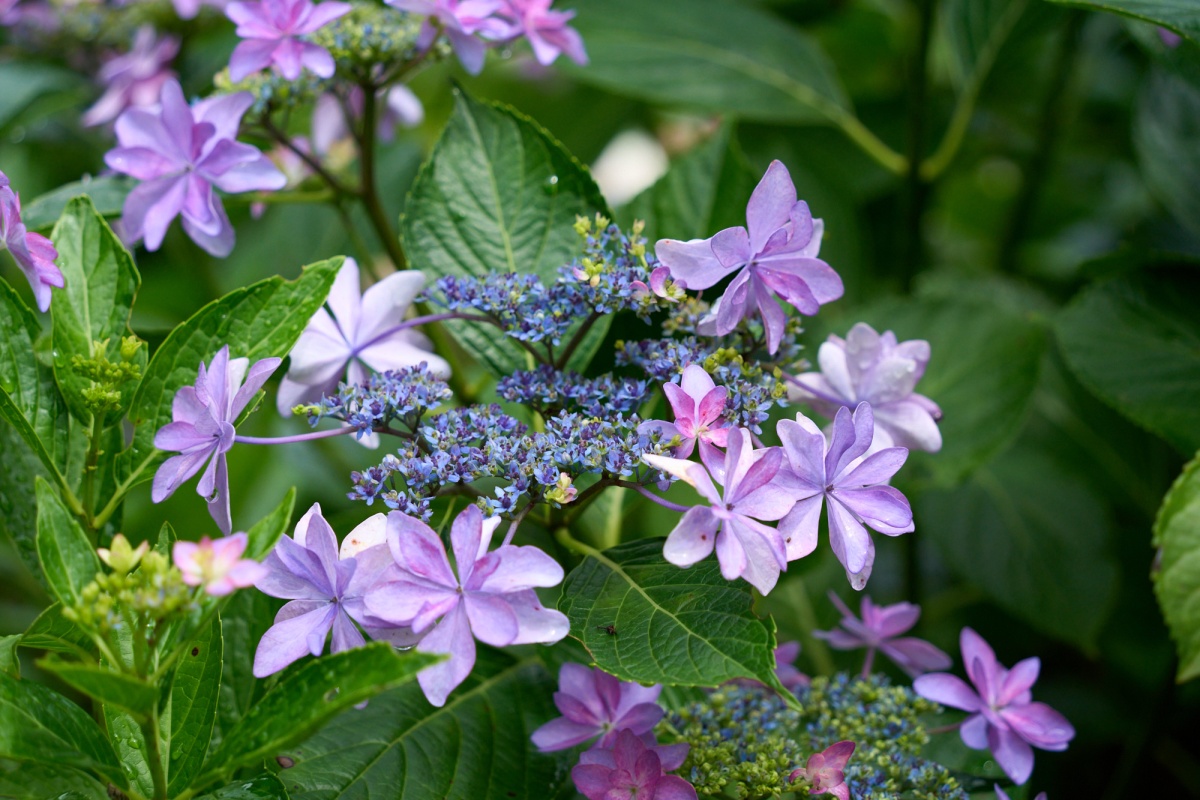
Because hydrangea species bloom at different times, visitors can enjoy a variety of colors throughout the season, such as these purple Dance Party blossoms.

Carrying On a Legacy: Two People’s Challenge of Walking with Nature
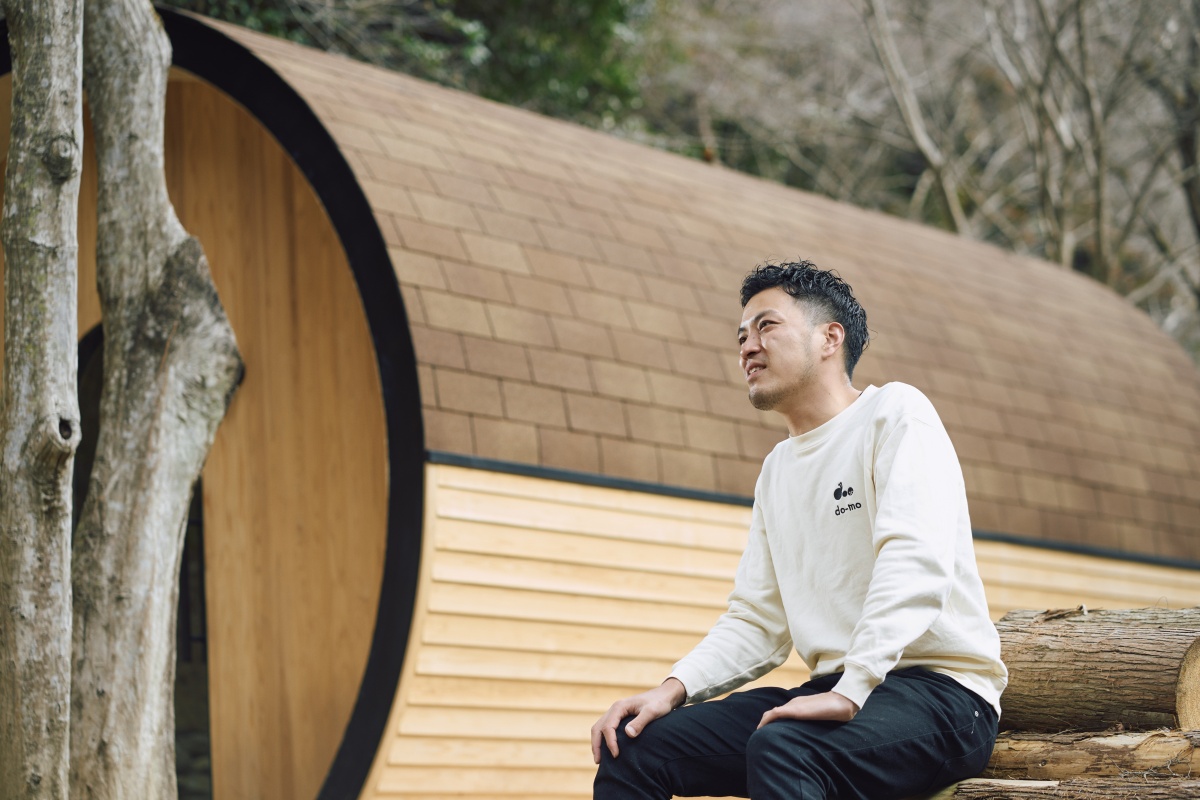
Ken Takamizu manager (director) of Ajisai Mountain.
This extraordinary project would not have been sustainable, however, without the support of a growing cast of supporters. One local resident helped organize the Flower Association, and the well-known sculptor Akimitsu Tomonaga brought additional attention to the site by carving dozens of wooden elflike figures—the Zizi Forest Fairies that now serve as whimsical guideposts all the way from the railway station.
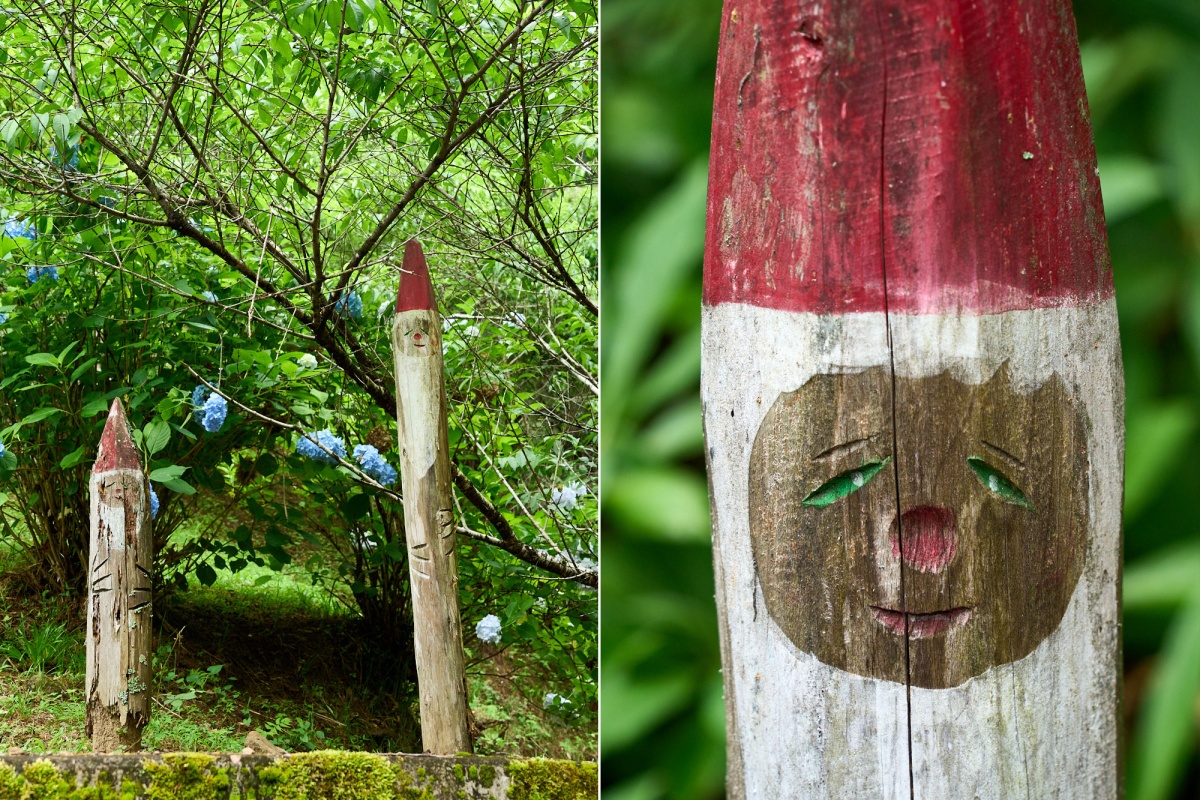
A well-known sculptor made these wooden guide dolls, called “Fairy Jiji,” for Minamisawa Hydrangea Mountain.
But the primary reason for the project’s success is a pair of young entrepreneurs, Ken Takamizu and Yuki Minamishima. They first met while studying and playing baseball at university. “When I started my own business, Minamishima was the first person I asked to join,” says Takamizu. The company, founded in 2016, was dedicated to creating local products rooted in Akiruno city. One of their initial ideas—to produce tea from hydrangea blossoms—led them to Minamisawa and his hydrangea mountain. The encounter sparked a deeper involvement, and they went from being novices to apprentices to their present positions as key caretakers of the site.
Takamizu was deeply moved when Minamisawa told him, “When I’m gone, it could be the end of this hydrangea mountain. I want to leave its future with you.” This motivated Takamizu to preserve the site as a “Tokyo treasure” for future generations. Takamizu has a strong attachment to his hometown of Akiruno, and believes that protecting the mountain is a way of sustaining the wider local community. He is committed to environmental harmony, seeking to welcome visitors while protecting nature.
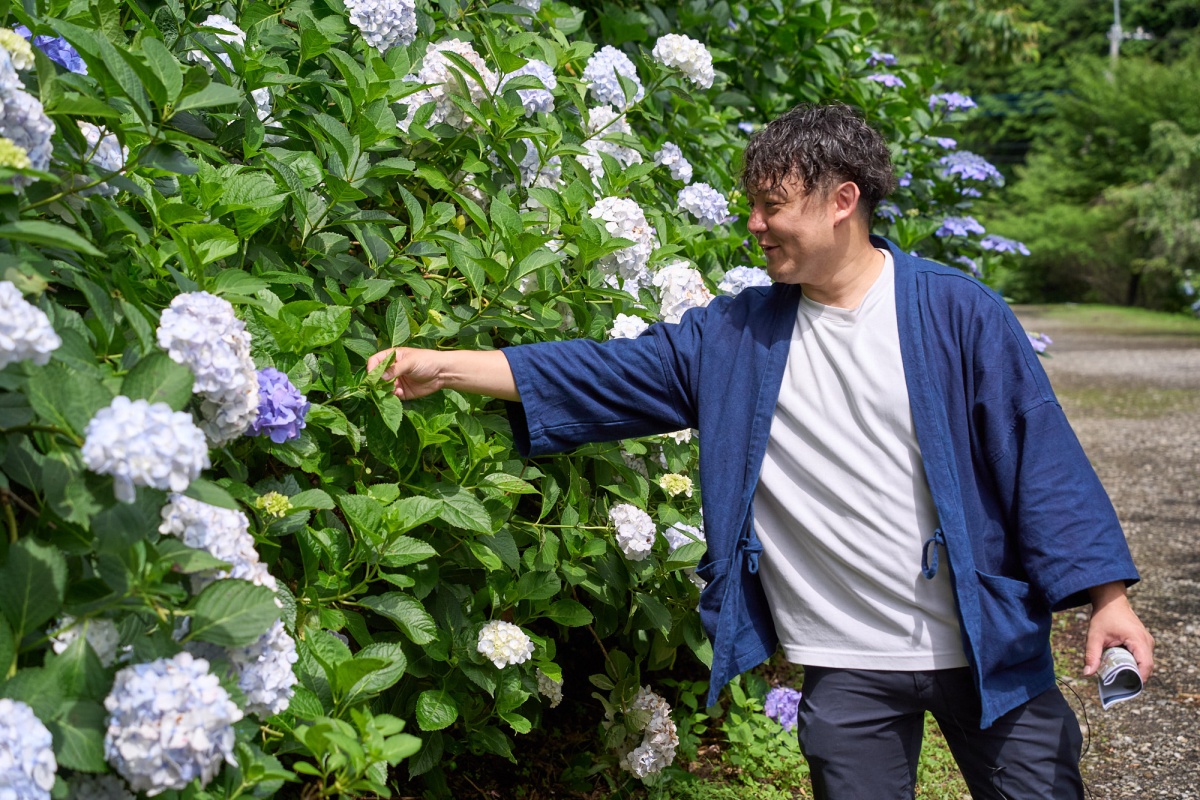
Yuki Minamishima manages and maintains the hydrangea fields.
Together, he and Minamishima have worked to sustain and expand Minamisawa’s vision, adopting construction methods and management practices that respect the forest ecosystem. They have constructed a reception counter for collecting entry fees, and added several viewing terraces where visitors can get an elevated look at the hydrangea fields. The entry fees go toward operation and maintenance costs , a sustainable management policy. The structures were built of eco-friendly, locally sourced materials, such as cedar and cypress from the Tama area, using traditional Japanese carpentry methods. Wood was the material of choice in order to minimize the use of concrete. “Unlike concrete, wood maintains harmony with the natural environment and creates spaces where insects and plants coexist, ” says Takamizu. “We try to make use of what the forest provides us.” The water system uses water drawn directly from the mountain, and felled wood is used for retainer walls for erosion control and as benches.
Minamishima oversees the daily upkeep of the flowers. Maintaining more than 15,000 plants is a full-time job—one that demands careful attention to detail and the horticultural skills he learned walking in the footsteps of his mentor. While the peak blossoming time is the rainy season, some plants continue to produce flowers through the rest of the summer. After the blossoms wither, the plants must be pruned to keep them from growing in wild abandon. “It’s a little like working on bonsai,” says Minamishima. “You guide the plant’s future shape depending on how and where you prune—whether it’s closer to the end of the stem, for example, or nearer to the base.” With that many plants, with many blossoms on each plant, it’s a considerable workload.
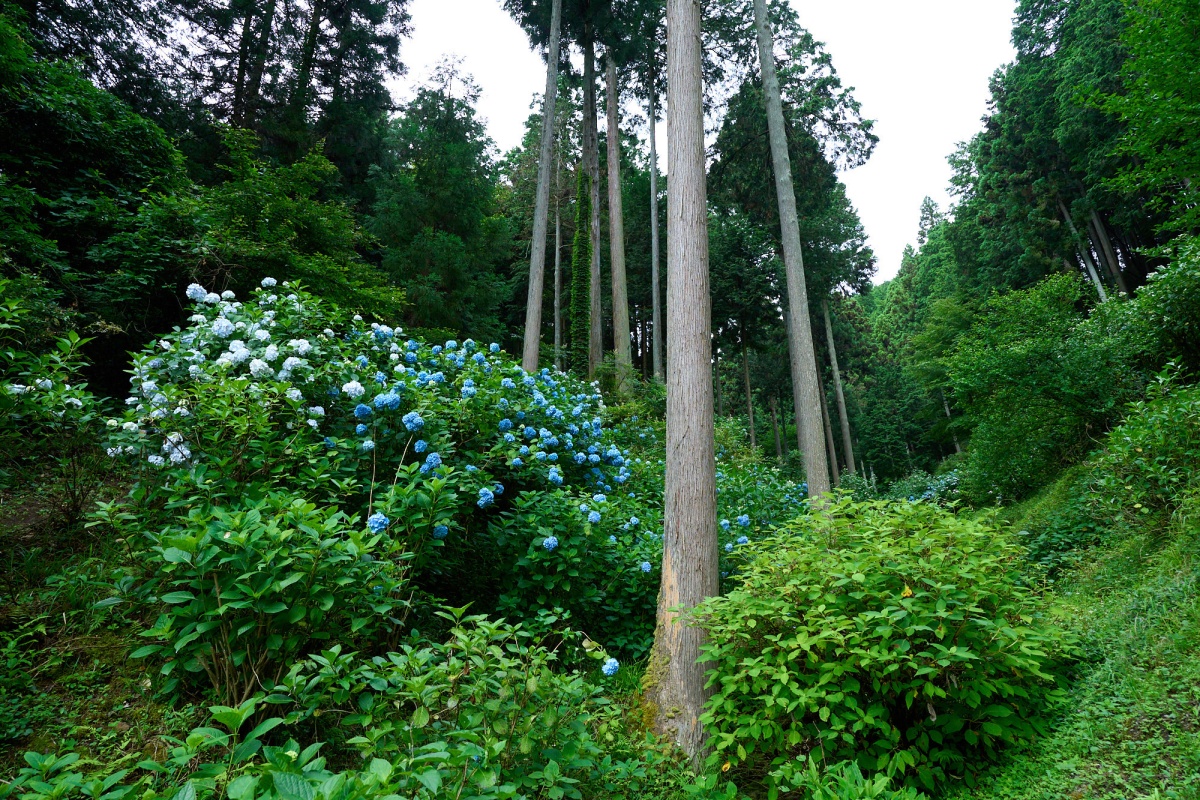
The lower branches of the forest trees are pruned to allow sunlight to reach the hydrangeas.
On our walk through the valley, he points out areas slated for new plantings, sometimes undertaken with the help of volunteers. Back at the foot of the circuitous trail, he leads us through the nursery area where young hydrangeas are growing. “It usually takes three years before they are strong enough to plant in the forest,” Minamishima says. “They have to be able to compete with the fast growing undergrowth.”
Takamizu handles public outreach, including branding, promotion, and social media. A number of eco-tourism initiatives are either underway or in the planning stage, in cooperation with other local organizations. The company also collaborates with local high school classes and plans volunteer activities. Another project, the Goichi Marché, is held on the third Saturday of each month near Musashi Itsukaichi Station. It offers a “farmer’s market” atmosphere with local foods, workshops and community activities. Coupon booklets have been produced to encourage visitors to explore local shops in the area. Through these activities, visitors are encouraged to connect directly with the local community, learn about sustainable lifestyles, and support the regional economy. It is a way for visitors to experience and participate in the local satoyama culture in an environmentally responsible manner.
The annual One Million Hydrangeas Music Festival, held at the height of the hydrangea season, draws well-known musicians and lively crowds, helping to spread awareness. Instagram followers have increased, along with media coverage. International visitors are another target, and plans are underway to improve multilingual information. “When we first started, over 99 percent of visitors were seniors in their seventies,” says Takamizu. “Now, we see lots of couples and families, and the demographic is more diverse.”
To deepen the village’s appeal as a sustainable destination, a new eco-lodge is being created as a low-impact guesthouse and café, which will also function as a space for corporate retreats and CSR training. “We hope it will be a place where people can experience the value of nature by staying overnight,” says Takamizu.

Beyond Viewing: Experiencing People and Life at Minimisawa Hydrangea Mountain
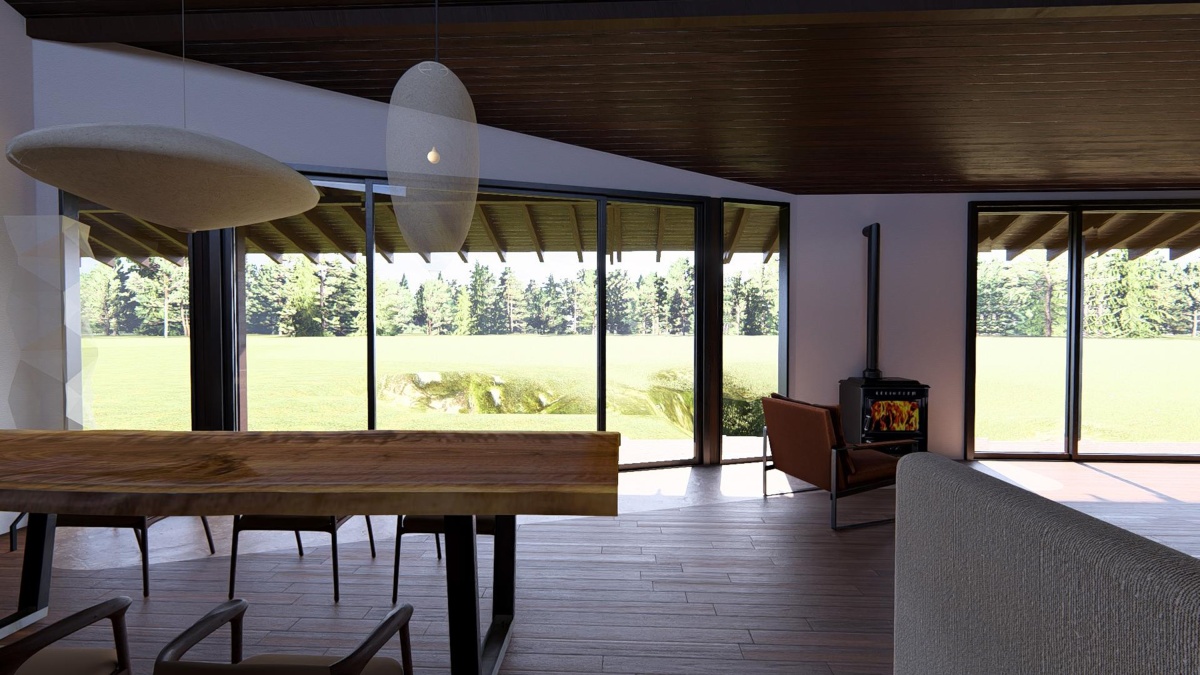
A newly built mountain lodge nearby offers rest stops and overnight accommodations (CGI).
Visitors are encouraged to follow the restrictions on car access, which were implemented in 2020, after Takamizu and Minamishima agreed to prioritize long-term sustainability over short-term gains. And, although numbers dropped to 7,000 the first year, the number has now recovered to 10,000 hydrangea-loving visitors.
To make visits to the area even more meaningful, Ajisai Mountain offers a variety of hands-on experiences designed to deepen the connection to both nature and the local community. Tour members can join in satoyama land stewardship activities, help plant new hydrangeas, or take part in pruning workshops where they will learn how careful cuts shape next season’s blooms. For something uniquely local, visitors can try enjoying ajisai tea, made using the blossoms of the hydrangeas themselves—a fragrant way to take home a memory of the mountainside.
When it comes to staying overnight, there are several sustainable options that let guests experience the area’s quiet beauty at their own pace. They can book a night in the new eco-conscious guesthouse. Or, choose one of the cabins built from locally sourced timber, or pitch a tent at one of the low-impact campgrounds nearby. However they choose to stay or get involved, their visit will directly support the preservation of this extraordinary place—and help ensure that Ajisai Mountain continues to bloom for generations to come.
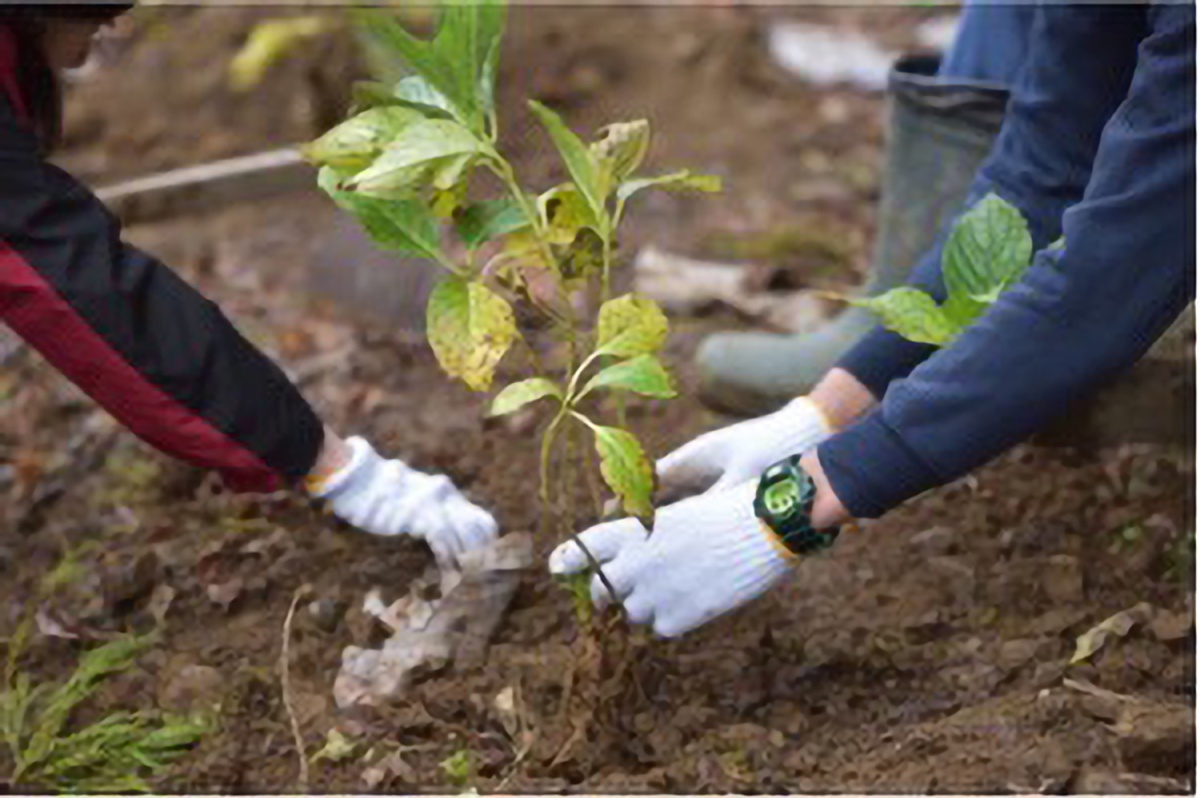
Pruning and tree-planting experience for participants
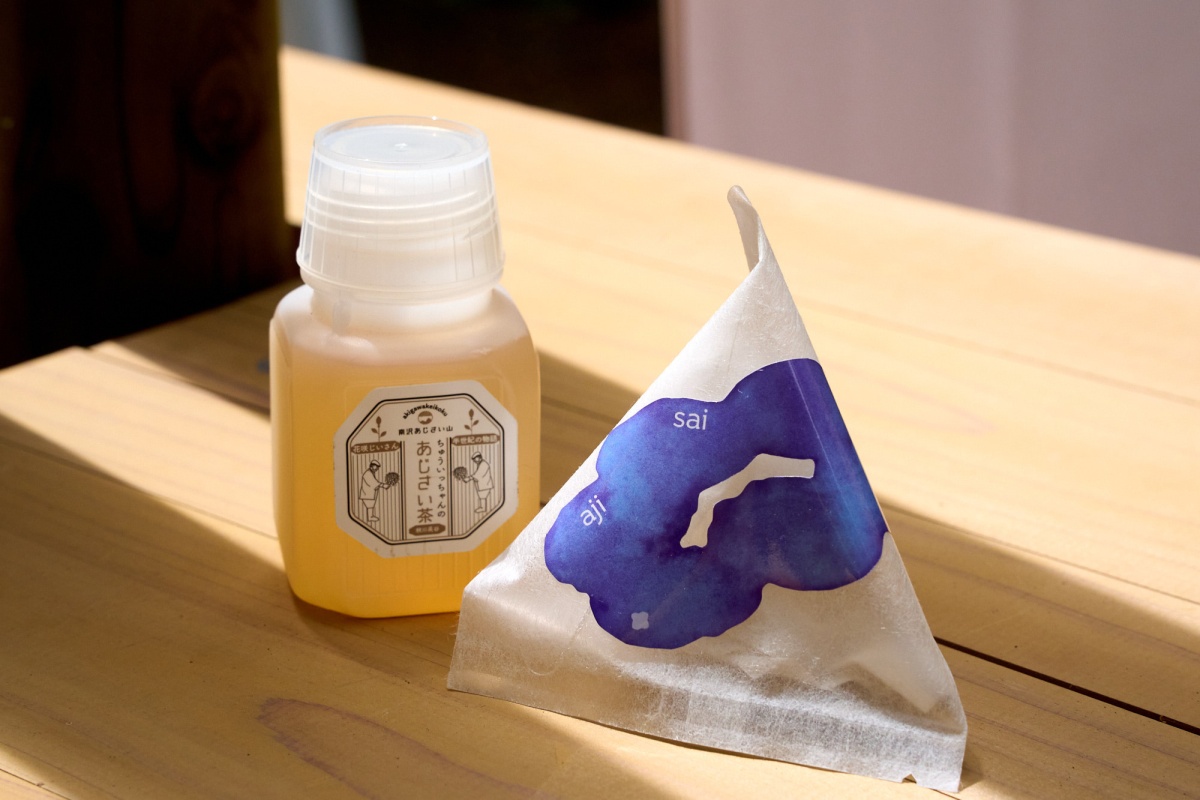
At the guesthouse, visitors can enjoy handmade hydrangea tea.
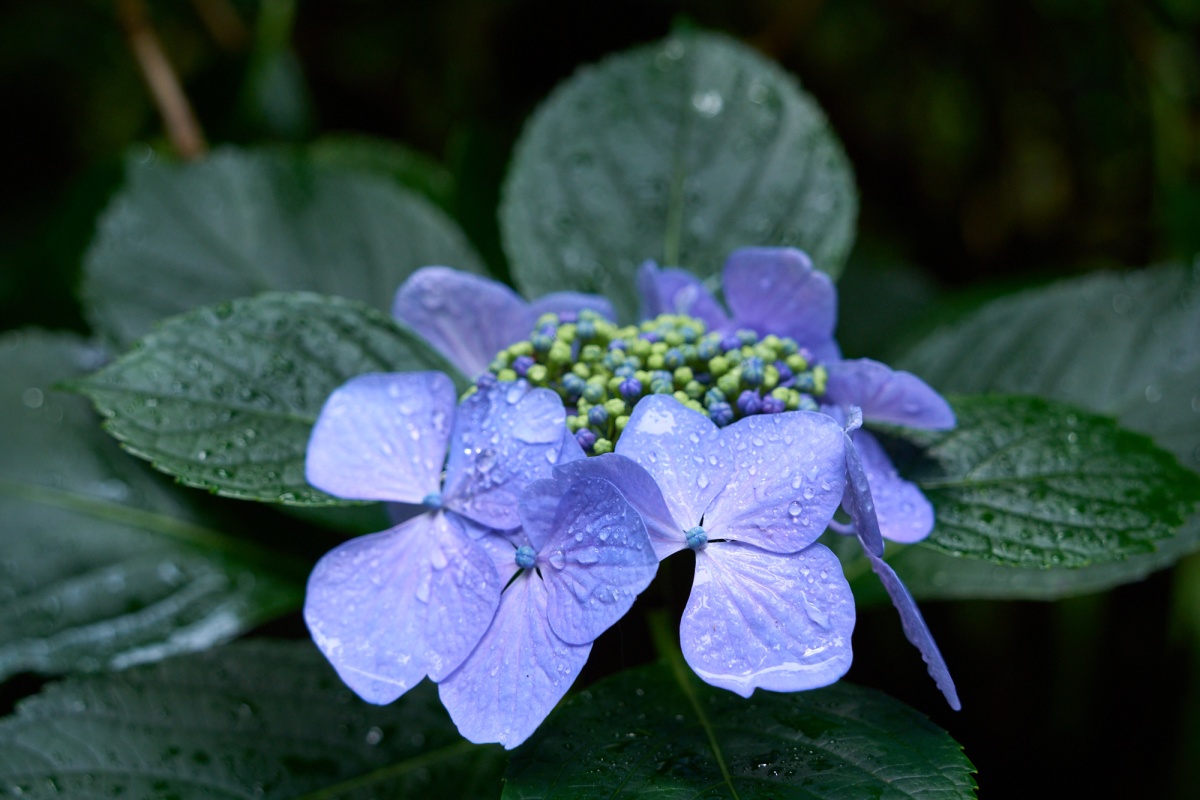
The hydrangeas are at their most beautiful when bathed in the soft light of early morning.

Minamisawa Hydrangea Mountain
Location:
368 Fukasawa, Akiruno City, Tokyo [MAP]
Approximately 8 minutes by taxi from Musashi-Itsukaichi Station on the JR Itsukaichi Line
By Car:
There is no parking available on site.
If arriving by car, please use a coin-operated parking lot near Musashi-Itsukaichi Station, and then continue on foot, by taxi, or via the seasonal shuttle bus.
For details on blooming season, opening hours, and admission fees, please refer to the website.
URL: http://ajisai-yama.com
SNS:Instagram https://www.instagram.com/ajisai_yama/


Sustainable Traveler:Gregory Starr
Gregory Starr came from the United States to spend over five decades in Japan, where he has been the editor-in-chief of Premiere Japan and editorial director of Kodansha International. Over his career, he has covered Japan’s history, culture, national parks, and sustainability-related initiatives for a number of publications. He has worked for several years on the Japan Tourism Agency’s “Multilingual Support Project for Regional Tourism Resources,” where he has been recognized as an S-rank writer, the highest distinction awarded.
※This content was produced with support from the Tokyo Convention & Visitors Bureau Sustainable Travel Promotion Grant Program.
Photo: Tatsushi Yuasa


